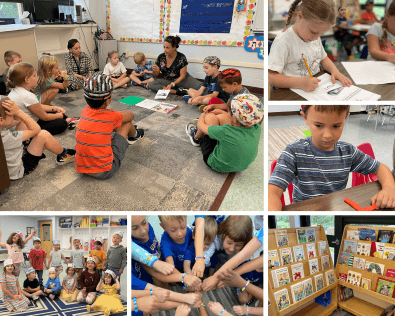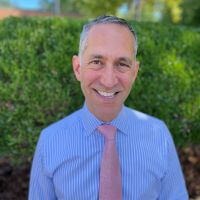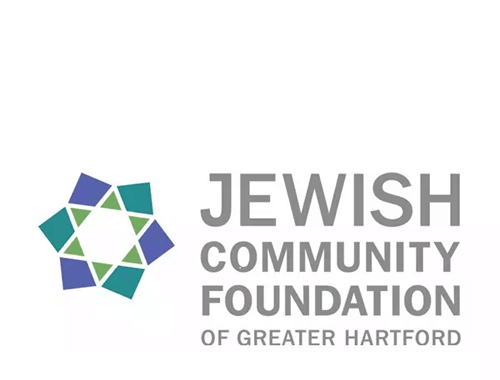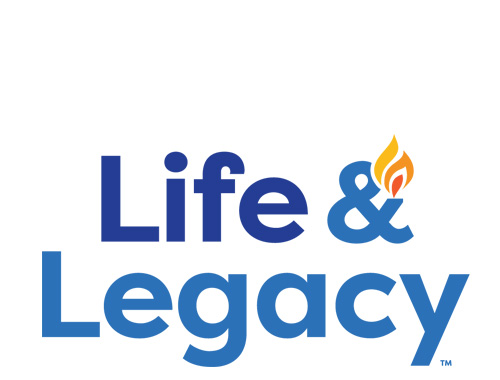Schechter Shavua: September 9, 2022
Messages from a Map
The Nevatimstudents (grades 5-6) have begun learning about early human civilizations in History class. As part of their learning, students utilized map skills to find important archaeological sites and understand the geography that allowed early civilizations like Mesopotamia and Egypt to flourish. They identified key physical features of the land and marked them on their own maps. The students then used critical thinking to make inferences about why early humans formed their villages and towns around rivers, in fertile lands versus deserts, and the way in which our ecosystems shape our abilities to live.
Introducing the Hebrew Center
 Students in grades K-2 now have an exciting new space to learn and practice their Hebrew language skills… the Hebrew Center (Merkaz Ivrit מרכז עברית)! From the moment students enter this inviting double-sized classroom, they are completely immersed in Hebrew - through games, books, music, and activities. This week, Kindergarteners were introduced to each aspect of the center (for example: library/ sifriyahספרייה, building center/merkaz b’niyah מרכז בנייה, art center/ merkaz yetzirah מרכז יצירה, meeting circle/ mifgash מפגש) and learned to recognize and write their names in Hebrew. First graders practiced the letter raishר then used a variety of manipulatives to create its shape. Occasionally, there will be opportunities for mixed age groups to forge bonds between grades and develop leadership skills for the older students. This week, the second graders (kitah bet- כיתה ב) joined Kindergarten to make friendship bracelets and to help teach some of the new Hebrew vocabulary.
Students in grades K-2 now have an exciting new space to learn and practice their Hebrew language skills… the Hebrew Center (Merkaz Ivrit מרכז עברית)! From the moment students enter this inviting double-sized classroom, they are completely immersed in Hebrew - through games, books, music, and activities. This week, Kindergarteners were introduced to each aspect of the center (for example: library/ sifriyahספרייה, building center/merkaz b’niyah מרכז בנייה, art center/ merkaz yetzirah מרכז יצירה, meeting circle/ mifgash מפגש) and learned to recognize and write their names in Hebrew. First graders practiced the letter raishר then used a variety of manipulatives to create its shape. Occasionally, there will be opportunities for mixed age groups to forge bonds between grades and develop leadership skills for the older students. This week, the second graders (kitah bet- כיתה ב) joined Kindergarten to make friendship bracelets and to help teach some of the new Hebrew vocabulary.
There is still plenty of Hebrew in use throughout the day in the “home base” classrooms, through Judaic Studies, brachot , songs, and more. However, according to Hebrew Department Head Anat Climor, when they enter the Hebrew Center, students know that they automatically switch their brains into Hebrew mode. Teachers of older grades can also bring their students to use the Hebrew Center space for project work.
Jewish Pride Shines Brightly on the Blacktop
The weekly ReLiSh(Ruach Lichvod Shabbat ) program, a highlight of the Schechter week, is our community program to celebrate Shabbat. Under the leadership of parent and Board President Jason Kay , students, faculty, and parents sing, dance, and joyfully welcome Shabbat together as a group. Sarah Montag , Director of Teaching and Learning, leads enthusiastic dancers; Jamie Debicella, our IT Director, dishes out some great solos on the electric guitar, and members of the Greater Hartford Jewish community visit to share stories and teachings.
Parents are invited to join us every Friday from 8:40-9:10am, and we also love when members of the community attend our outdoor ReLiSh on the blacktop when weather permits. We encourage our students and guests to wear blue and white - Schechter colors! We look forward to welcoming you to ReLiSh this week, or when you can make it in the future!
Our first ReLiSh of the year had a fantastic turnout of parents, and we hope to see even more in the future.
Click HERE to see photos!
Parashat Ki Teitzei —Miracles (and Mitzvot) are All Around
 In the 1960s, Rabbi Abraham Joshua Heschel spoke to countless Jewish organizations. When delivering a lecture in the evening, he frequently began by saying, “Ladies and gentleman, a miracle just occurred.” After a pause, he continued: “The sun has just set.” A few people in the audience would understand, but most were confused, and some were dismissive. Was the rabbi trying to make a joke? If so, no one found it funny.
In the 1960s, Rabbi Abraham Joshua Heschel spoke to countless Jewish organizations. When delivering a lecture in the evening, he frequently began by saying, “Ladies and gentleman, a miracle just occurred.” After a pause, he continued: “The sun has just set.” A few people in the audience would understand, but most were confused, and some were dismissive. Was the rabbi trying to make a joke? If so, no one found it funny.
But he proceeded to talk about how religion encourages us to live with a sense of wonder. Is a sunset just a routine matter, best ignored—or is it a miracle to be recognized, appreciated and praised? The answer depends on our way of seeing the world. Judaism, according to Heschel, urges us to look for miracles; if we try, we can discover God’s fingerprints all over the place.
This week’s parashah, Ki Teitzei, contains a similar message with regards to mitzvot . It contains more of them than any other Torah portion—and when we study them, we see the world differently. Normally, we wouldn’t take much notice of a flat-roofed building, a field at harvest time, or a bird’s nest—but our parashahinstructs us to build railings around the edges of flat-roofed houses to prevent injuries, to leave forgotten sheaves of wheat in the field for the poor, and to shoo the mother bird away from a nest before gathering the eggs. Seeing those objects through the Torah’s lens, we realize that everyday items are alive with potential. If a sunset is a chance to see God’s handiwork, a flat roof is a chance to do God’s work.
At Schechter, our students learn the science of sunsets, and the geometry of a flat roof; they understand the science. But they also learn to look at the world through spiritual lenses, finding miracles and mitzvot all around.
Shabbat shalom,
Rabbi Jonathan Berger
Head of School
Questions for the Shabbat table:
1. Why might the Torah ask us to build a railing around a flat-roofed house? What general principle is the Torah trying to teach us?
2. Can you think of a time when you said, “This is a miracle!” about something that you had previously ignored or not appreciated?
Solomon Schechter Day School
of Greater Hartford
26 Buena Vista Road
West Hartford, CT 06107
© Solomon Schechter Day School of Greater Hartford | Site design Knowles Kreative




